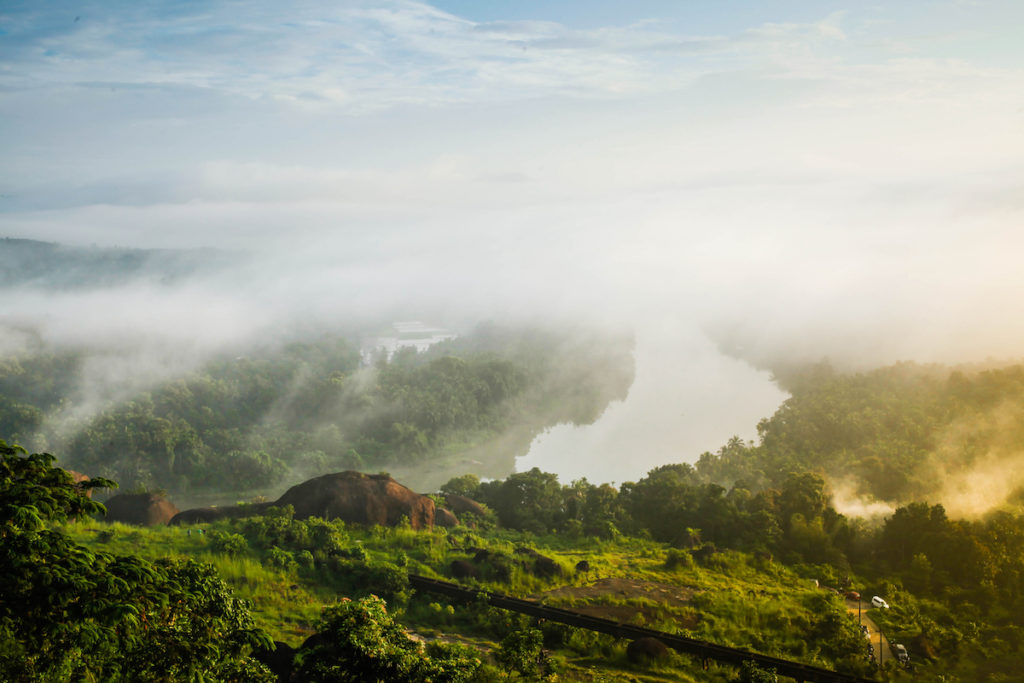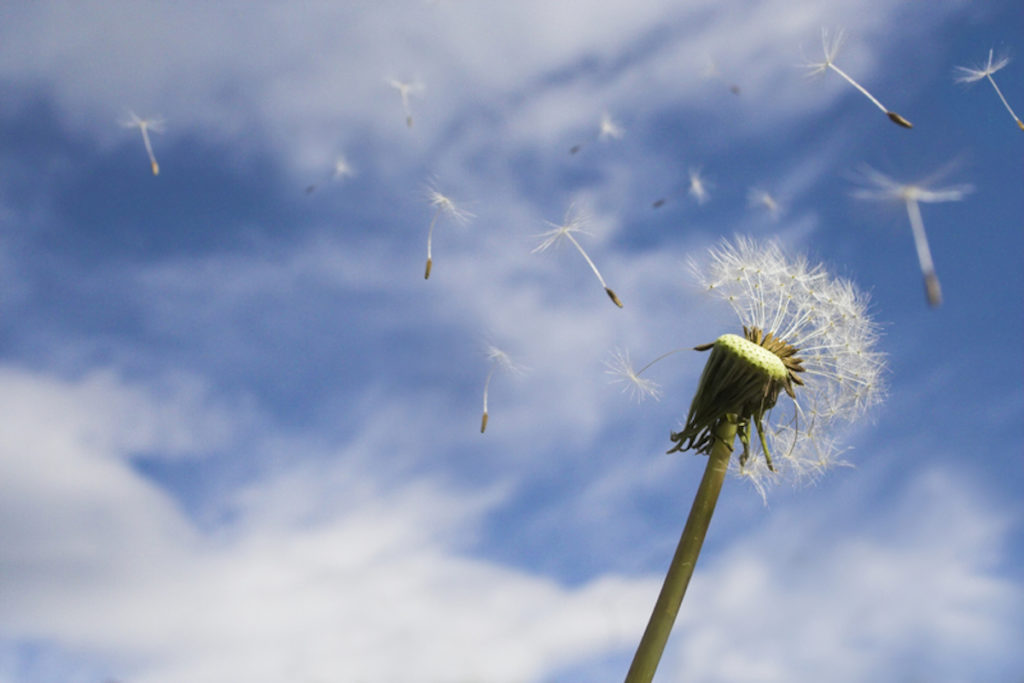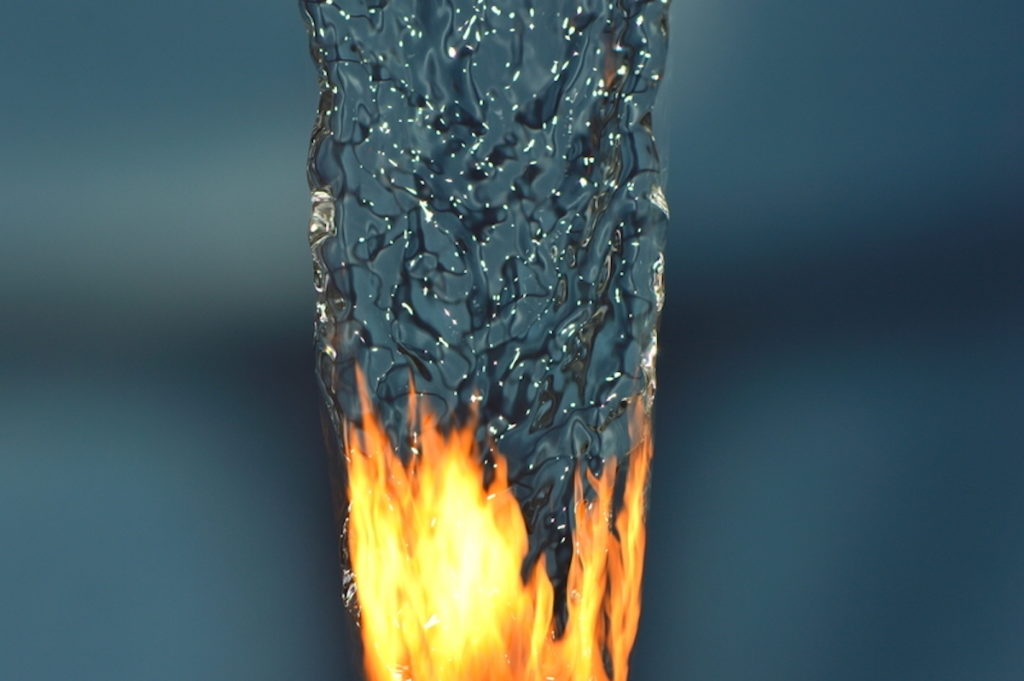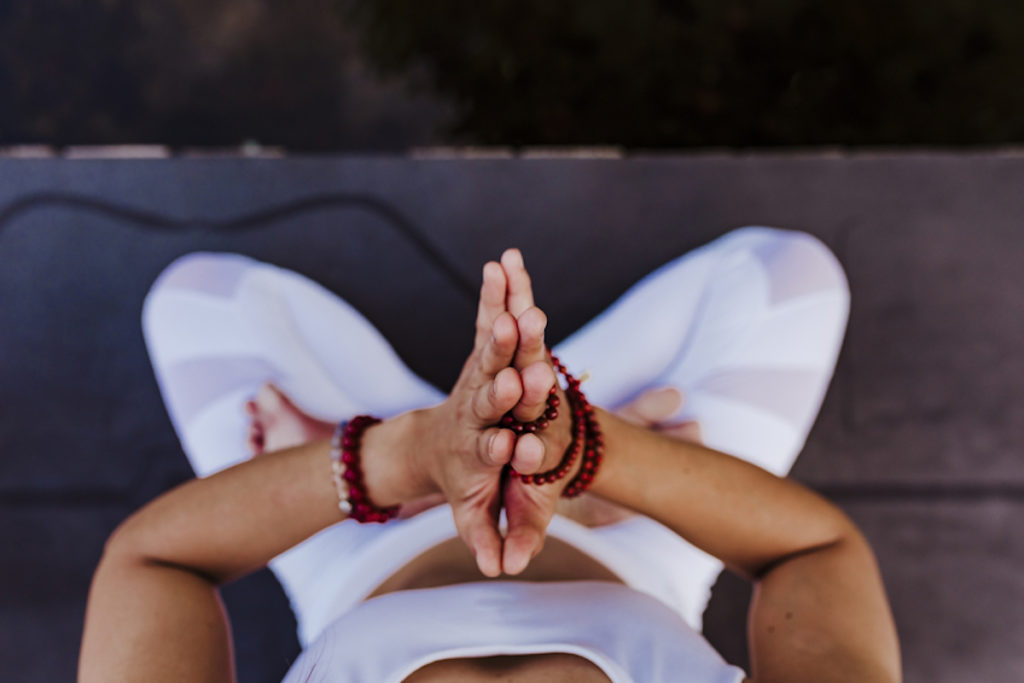
Are you creative but inconsistent with your work? Organized but prone to being irritable because you expect perfection (from yourself as much as other people). Or just really ‘chill’ and laid back?
According to Ayurveda, the science of life, there are ‘energy principals’ in all of Nature that govern our tendencies, affinities, structure, functions and even susceptibility to certain types of ailments. These principles are known as Doshas and are a key concept in any Ayurvedic assessment for both prevention and disease management. According to Ayurveda, there are five elements (space, air, fire, water and earth) in nature that combine to form the three different Doshas (Vata, Pitta, Kapha) and all of creation, from formulations that heal, to the food that nourishes us.
Our primary Ayurvedic constitution (Prakriti) could be predominantly one, a combination of two, or in rare cases: a balance of the three Doshas. A state of health called swasthya (which literally means being ‘established in the self’) is when our Doshas and Prakriti are balanced. That is why we assess and personalize protocols in Ayurveda and don’t follow a one-size-fits -all approach. Everybody is unique, and the goal is to restore them to their Prakriti in which they can fulfill their highest potential.
Doshas are also affected by the passage of time, and we must be mindful this doesn’t lead to an imbalance. For instance, during the day certain Doshas dominate at certain times; also, during certain seasons and times in our life span. Ayurveda is the earliest known form of medicine that follows biorhythms to restore health.
Dosha imbalances can be caused by lifestyle, diet, stress, genetic propensities or external factors. Key principles of balancing Doshas are ‘like increases like’ and ‘opposites balance each other’. When we know Dosha qualities, our own Dosha constitution or imbalance, we’re empowered to work towards preventive health. For instance, a dry quality (in Vata Dosha) is aggravated by dry climate or eating dry food worsens it. The way to restore balance is through staying hydrated, having oily food and a daily self-massage.
What are the three Doshas and how do they impact your health and wellbeing?

Vata Dosha
Elements and qualities of Vata
Vata is composed of the air and space elements. Vata’s qualities are dry, cold, rough, light, clear, mobile, and subtle.
Function of Vata
Vata is the energy of movement, and its seat is the colon. Vata ensures smooth functioning of respiration, speech, working of tissues, managing natural urges like hunger, thirst, excretion etc., heart function, circulation and communication from the brain through the nerves to the entire body.
When does Vata dominate?
Vata dominates from 2-6 am and pm, during fall and early winter seasons in the US and in old age.
Traits and imbalances of Vata
(Let’s do this…maybe!)
A typical Vata person is likely to think out of the box and come up with a brilliant idea for a start-up company! When Vata dominates, people can be,
- Creative but could be inconsistent and their mood could fluctuate quickly
- Enthusiastic and energy comes in bursts
- Great at multitasking
- Quick learners
- Kind and good-natured
- Flexible
- Variable appetite
- Likely to be petite and agile with thin hair
Vata Imbalances:
Vata’s tend to be sensitive to their diet and the weather, particularly cold weather; their digestive fire and appetite fluctuate, and they may experience problems with circulation, joints, dry skin and hair, bloating, constipation and insomnia. The Vata mind can be anxious and restless. Vata imbalance can reduce immunity and cause weight loss.
What causes Vata imbalance?
Dry, cool, windy weather, consuming dry, light and cold foods and excess of pungent, bitter and astringent foods. Overdoing things like exercise, suppressing natural urges and inadequate or late sleeping can also throw Vata out of balance. Grief, fear, insecurity and anxiety can also provoke Vata.
What helps Vata stay in balance?
Warmth, unctuousness, staying hydrated, getting enough sleep and following a routine help balance Vata. A daily Abhyanga or self massage, nature walks, grounding yoga and meditation. As well as favoring the sweet, sour and salty tastes, dairy, soups and stews, and heating spices.

Pitta Dosha
Elements and qualities of Pitta Dosha
Pitta is composed of the water and fire elements and is the energy of metabolism and transformation. Pitta is hot, light, sharp, oily, liquid, acidic and spreading.
Function of Pitta
Pitta is the energy of metabolism and transformation. It is responsible for the smooth functioning of the digestive system and is located in the small intestines. It helps regulate body temperature and gives luster to the skin. It also aids in the transformation of emotions and experiences that we ‘ingest’.
When does Pitta dominate?
Pitta dominates from 10-2 am and pm, during the summer season and youth through adulthood.
Traits and imbalances of Pitta
(My way or the highway!)
A typical Pitta person could lead the company the Vata person got the idea for! When Pitta dominates, people can be,
- Fiery, motivated and determined
- Good leaders, goal-oriented
- Intellectual
- Athletic
- Have a healthy digestion, metabolism and circulatory system
Pitta imbalances
They could also be impatient, aggressive, get ‘hangry’ (angry when hungry), be ultra-sensitive to hot weather and prone to inflammation, skin blemishes, and early graying, baldness and thinning of hair. Imbalanced Pitta can cause excess hunger and thirst, hyperacidity, burning sensations, discoloration of skin, urine and stool and lead to insomnia.
What causes Pitta imbalances?
Exposure to hot weather and hot food can aggravate Pitta. Sour, salty and pungent foods vitiate Pitta and emotions like anger can also inflame this Dosha.
What helps Pitta stay in balance?
Pitta is balanced by slowing and cooling down, avoiding activities like intense exercise in the heat, reducing oily, hot and spicy food and a regular practice of meditation. Favor sweet, astringent and bitter foods and be mindful about competition and perfectionism.

Kapha Dosha
Elements and qualities of Kapha Dosha
Kapha is composed of the water and earth elements and is the energy of cohesion and binding. Kapha is moist, cold, sticky, heavy, slow, smooth, soft, stable and cloudy.
Function of Kapha
Kapha is the energy of cohesion and binding and is located in the stomach and chest region. It ensures stability and strength of the body, ensures that joints are lubricated, hydrates tissues and keeps the skin moisturized. Kapha provides the body with vigor, vitality and immunity.
When does Kapha dominate?
Kapha dominates from 6 to 10 am and pm, during late winter and spring and during childhood.
Traits and imbalances of Kapha
(Slow and steady…!)
A Kapha is grounded and would nurture and maintain the same company the Vata person had an idea to start up and the Pitta person is leading! When Kapha dominates, people can be,
- Strong, caring and supportive
- Slow and steady (Probably the tortoise who won the race was modelled after them)
- Empathetic and happy
- Have oily, smooth, lustrous skin and hair
- Have rounded, flexible joints
- Enjoy good health, robust immunity and excellent stamina
Kapha Imbalances:
Their metabolism can be slow, they tend to gain weight quickly, oversleep, get depressed and are prone to respiratory issues, water retention and metabolic disorders, possessiveness and resistance to change.
What causes Kapha imbalance
Overeating, over sleeping, day time sleep and eating heavy, cold, sweet, sour, salty, and fried foods aggravates Kapha. Exposure to cold and wet weather can also vitiate Kapha.
What helps Kapha stay in balance
Kapha needs to rev it up, spice things up literally, add warmth, more intense exercise and activity and favor warming spices, bitter, pungent and astringent food! Avoid heavy food, day time and excessive sleep.

Embracing your Ayurvedic constitution, correcting imbalances and a resolution to be healthy!
Benefits of learning your constitution
Knowing yourself would mean you have the tools to stay balanced, healthy, happy and live to your full potential!In the US, 6 in 10 people have a chronic lifestyle based disorder, according to the CDC, which includes type 2 diabetes, cardiac, joint, kidney and lung conditions and certain types of cancer. Prevention is of paramount importance and could transform your health (read more here).
Knowledge of your Constitution would help you,
- Tailor preventative health practices
- Align nutritional inputs
- Make lifestyle adjustments including sleep patterns, exercise and yoga guidelines
- Select your career and hobbies
- Maintain harmonious relationships and help your family and community
- Adapt to surroundings and daily, seasonal, natural rhythms and stages of life
So what is your Constitution in the first place?
Are you predominantly one Dosha? Two? Maybe all three?
While there are indicative questions online, a self-assessment may not be accurate or may even be misleading. A person with a long-standing imbalance like arthritis, someone impacted by the place they live (like a dry place), the weather, their age and even someone in denial may not be able to assess accurately what their constitution is.
One authentic way to find out your Prakriti is through an Ayurvedic consultation. You can learn more about our services here.
How does an Ayurvedic consultation help?
Ayurvedic professionals help you to assess not just your constitution, but your imbalances and they can work with you to meet your long-term health goals, prevent diseases from manifesting or manage their progression and restore you to a state of robust health. Read more about what happens in an Ayurvedic consultation here).
We all have health goals. People who make New Year Resolutions are ten times more likely to achieve their goals than those who don’t. As the New Year unfolds and the pandemic doesn’t seem to be abating, what are your health resolutions that an Ayurvedic consultation can help with? Seek a consultation with one of our highly trained Vaidyas here.

FAQ
Basics
- What is Tridosha?
Tridosha means the three Doshas, Vata, Pitta and Kapha and how they combine and influence different people, nature, foods, seasons, places and stages of life. This is a key theory used in Ayurveda’s individualized health management. - I am V/P/K, what does that mean?
This indicates what Dosha dominates in your Prakriti. While the article deals with people who have predominantly V, P and K characteristics, a VP for instance would be a combination of the two. An understanding of the functions, structures, tendencies and affinities associated with these would help you align your lifestyle to stay in balance. - What are the different Ayurvedic constitutions or Prakriti types?
There are 7 types; V, P, K, VP, VK, PK and VPK. - Does our Prakriti change?
Our primary body constitution could be predominantly one or two and in rare cases a balance of three Doshas which is determined at the time of conception and this never changes. However, Doshas can go out of balance (called a Vikrati) and cause illnesses which is what we address in disease management. - Does a ‘Vata’ person not have any other Dosha?
No, everybody has all three Doshas and that is vital to the life function. It just means that Vata dominates. - Does eating meat affect my Prakriti?
Eating meat is a personal or religious choice. However, Ayurveda being a health practice only advises what kind of meat would you best digest based on the Doshas that dominate in your Prakriti or natural rhythms like the season. For instance, for Vata people or during the Vata season, we can favor eggs and fresh, local and organic meats that are moist, heavier, and sweet. This includes fish, turkey, chicken and duck. - How do we know whether a Dosha is in balance or out of whack?
The same Pitta characteristic of being able to digest food well could give us a good appetite or cause us hyperacidity and discomfort if it is out of balance! The calm, cohesive nature of Kapha could become dull, lethargic and even lead to depression. When there are prodromal signs of a disease or an illness, it is because Doshas are going out of balance and we are developing V/P/K problems. - Can an Ayurvedic Doctor help me calm my V/P/K problems?
Yes. An Ayurvedic Doctor can help us assess Prakriti and help with preventive lifestyle modifications to optimize our health. That is one part of the journey A trained Ayurvedic Doctor assesses etiopathogenesis; imbalances, their causes and the stages of diseases caused by V/P/K problems. Based on that they advise lifestyle changes, herbal formulations and therapies for disease management and calming V/P/K problems.
Intermediate Knowledge
- Why is the word ‘Dosha’ coined in the first place?
The word Dosha means something that can go out of balance. Doshas are constantly in a state of flux, which we call the “cosmic dance.” For instance, we tend to get hungry at lunch time based on circadian rhythms, which should be our largest meal because it is Pitta time. - Is one Dosha superior?
Every Dosha has its unique characteristics and weaknesses and we accept and learn how to manage our Prakriti. The objective is to use the knowledge at hand for prevention. - What are Gunas and how do Doshas interact with them?
Gunas relate to the mental tendencies which are in a state of flux and they are indeed related to Doshas. For instance, a Vata person can be Sattvik, Rajasic or Tamasic. This article written in the context of mental health during the pandemic provides more of an insight. - Is there any scientific evidence to support Doshas?
There are multiple studies that support the theory of Tridosha, genetics, epigenetics and phenotypes (link included). Also refer to the Ayurgenomics studies here. - How do we debunk common myths about Doshas? Our leading Vaidyas (Ayurvedic Doctors) have addressed this based on root texts and their clinical knowledge and experience. View the webinar Debunking Ayurveda Myths: Prakriti – Kerala Ayurveda Academy
About the author
-

Anuradha “Anu” Gupta is a NAMACB Certified Ayurvedic Practitioner, Engineer, MBA, Meditator, Writer, 200hr Yoga Teacher and Ayurvedic Doctor. She serves as Guest Faculty Member, Content Specialist and AP Mentor at at Kerala Ayurveda Academy & Wellness Center. She also runs her own Ayurvedic practice, Ayurvedic Footprints.
Anu has an extensive corporate background. She worked for...

